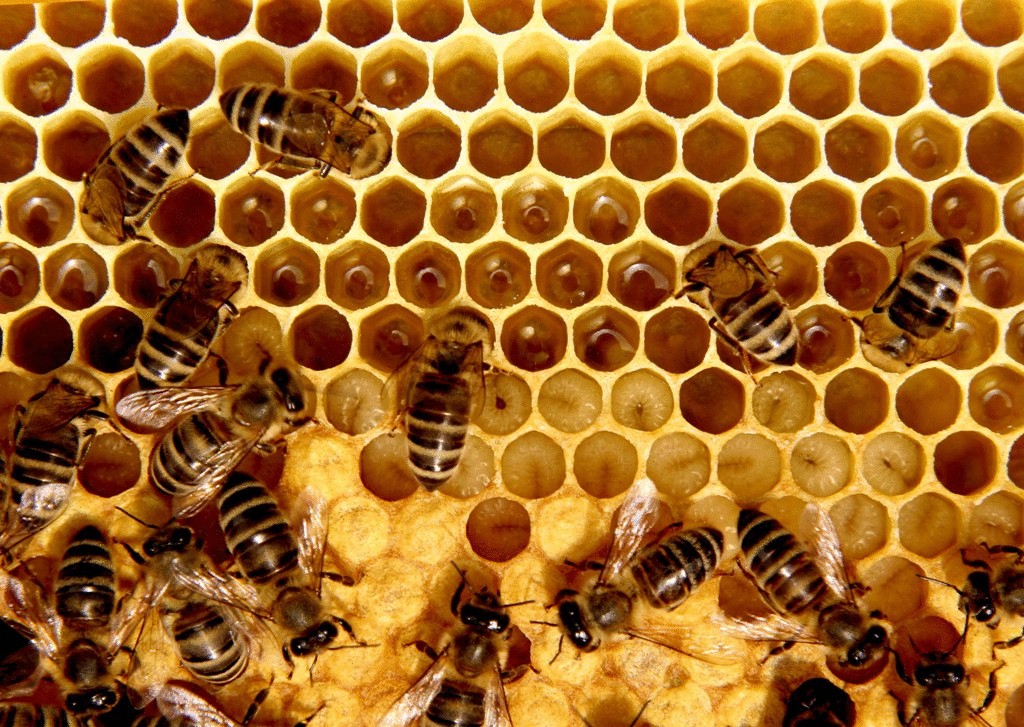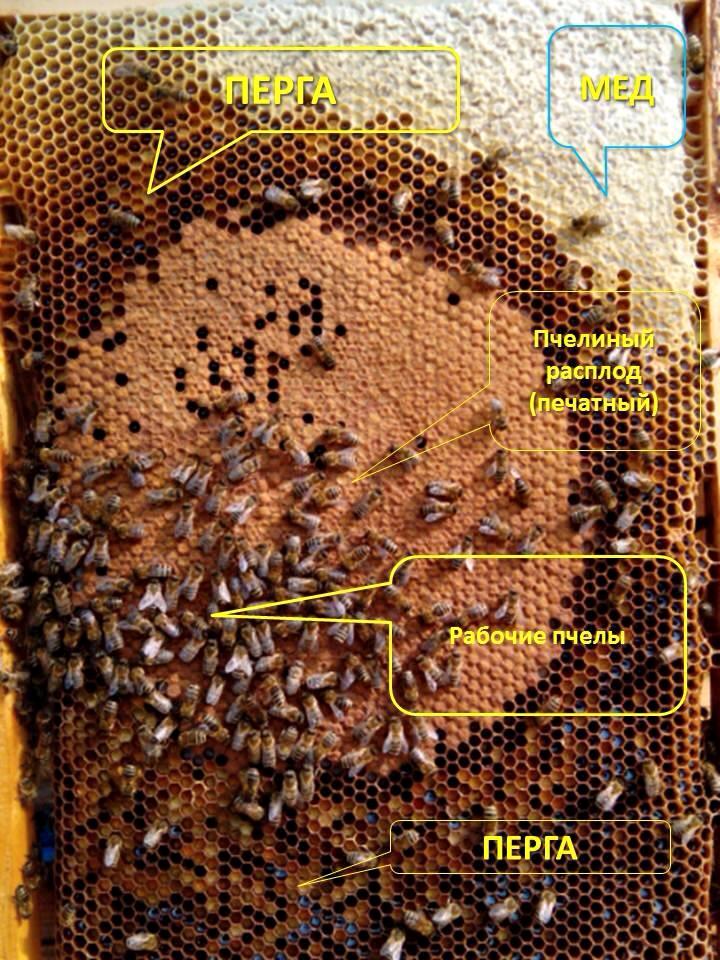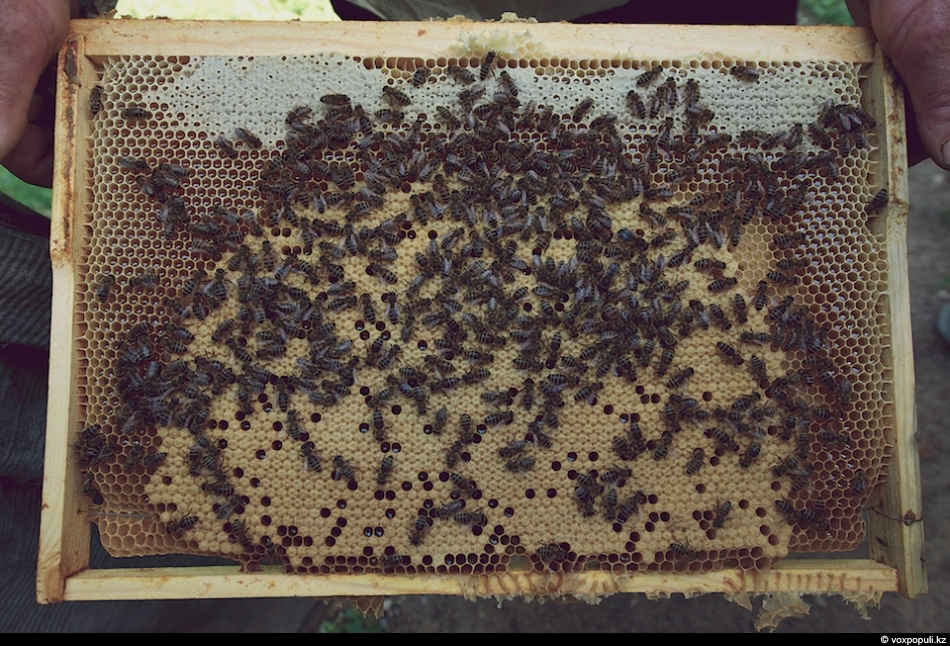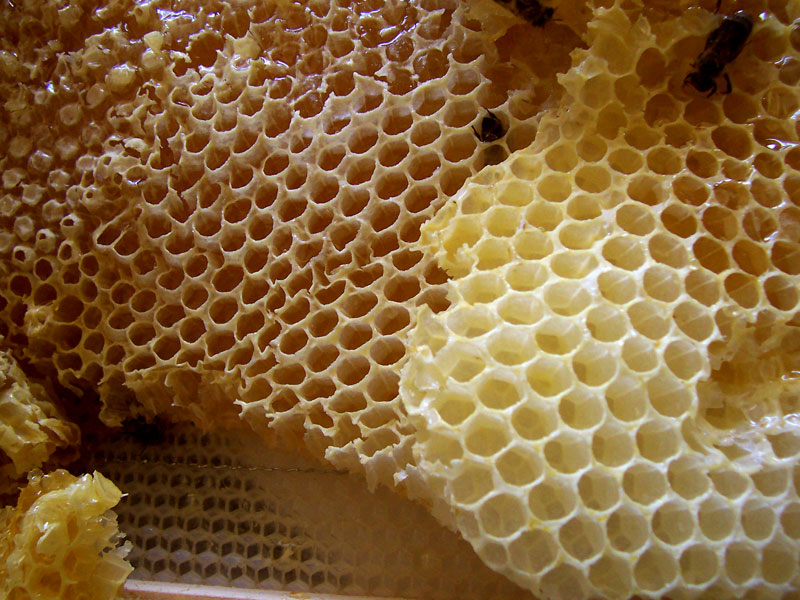What do bee honeycombs consist of?
Bee honeycomb - wax buildings of bees, designed to store stocks of food (honey and perga) and rearing the offspring; Are also a nest of a bee family. Bee honeycombs consist of hexagonal prismatic cells located on both sides of the common mediastinum, which can be artificial (artificial wax).
Types of cells
In honeycomb cells different cells are distinguished: bees, drone, transitional, queen cells.
Framework
The size of the honeycombs depends on the shape and size of the standard beehive frame. In modern beekeeping honeycomb can be extracted from the hive by using the frame system. The basis for the new honeycomb is a waxed beetle waxed on the frame - a thin sheet of beeswax with bottoms extruded on both sides and the beginnings of cells. Beginning to work on a new honeycomb, the bees first pull out the initials of the cells, and then build them up by adding the wax allocated by themselves. The result is a two-sided honeycomb with the right rows of bee cells.
The first frame hive, as is commonly believed in the domestic tradition, was invented in 1814 by the outstanding beekeeper PI Prokopovich. On the priority in this matter aspire also Jan Dzherzhon (created his collapsible beehive in 1838) and August von Berlepsh (1852). However, the framework construction, close to modern, was patented in the US by Langstroth in 1851; Frames in the hive of Langstroth were taken from above, it was this design that became the most widespread in the world.
Honeycombs
In the hive the honeycombs are arranged vertically. Honey-filled honeycombs within the standard framework contain about 4 kg of honey, which depends on the depth of the cell. As a rule, the upper part of the frame of the honeycomb is thicker, and taper to the bottom. Space for the passage of bees between cells is called a street, its standard width is 12-13 mm.
Physical basis
Bee honeycombs are the most advanced insect structures. Cells are built on two sides, and the way of "fixing" each of the cells does not provide any gaps and inconsistencies in all three dimensions. Thanks to this, a minimum of wax leaves for the construction of one cell-bees spend about 13 mg of wax, 30 mg of drone, for the construction of a single bee cell, for the construction of the entire honeycomb - 140-150 g.
Geometrical base
The hexagonal shape is the most economical and effective figure for building honeycombs. The horizontal diameter of the bee cell is 5.3 - 5.7 mm (there are about four cells per cm), the depth is 10-12 mm; Thickness honeycomb with an unsealed brood - an average of 22 mm, and after their sealing - up to 25 mm or more. The cell volume is about 0.28 cm3. When building honeycomb, bees use the magnetic field of the earth as a reference point. Cells of honeycombs are drone, honey and brood. Differ in size and depth. Honey - more deeply, drone - wider.
Sushi
Honey combs without bees are called sushi in beekeeping. The land is placed in families for their expansion, used to form new families (layers).






Comments
When commenting on, remember that the content and tone of your message can hurt the feelings of real people, show respect and tolerance to your interlocutors even if you do not share their opinion, your behavior in the conditions of freedom of expression and anonymity provided by the Internet, changes Not only virtual, but also the real world. All comments are hidden from the index, spam is controlled.